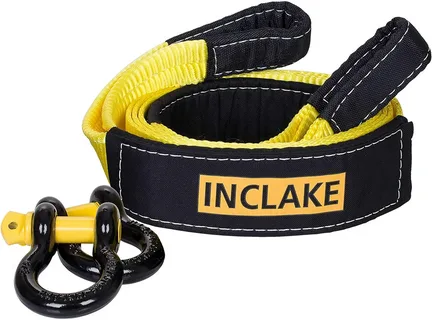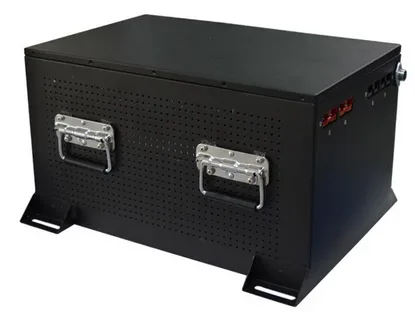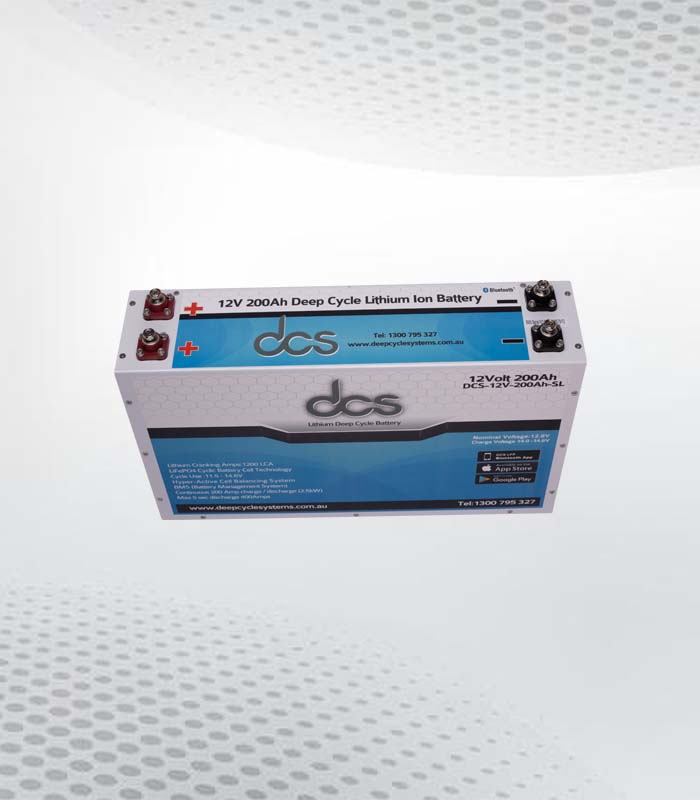Few tools are as essential as a tow strap kit when it comes to roadside assistance. Whether helping a friend out of a jam or dealing with an unexpected breakdown, knowing how to use this handy equipment can make all the difference. A tow strap kit is not just about yanking a vehicle from trouble; it’s about safety and efficiency, too. This guide will cover everything you need to know about using a Tow Strap Kit effectively.
How to Properly Use a Tow Strap Kit: Tips and Best Practices
Using a tow strap kit effectively involves more than just brute strength. Safety should always be your top priority. Before you even think about towing, ensure both vehicles are in good condition and equipped. Familiarize yourself with the weight limits specified on your tow strap to avoid any unnecessary strain.
When selecting a tow strap, look for one made from durable materials like nylon or polyester. These fabrics offer flexibility while maintaining high tensile strength. Additionally, straps with reinforced ends or loops should be considered to enhance durability during heavy pulls.
Before attaching the strap, clear the area of obstacles and make sure all parties involved understand their roles. Communication is key; establish signals so everyone knows when to start or stop moving.
When you’re ready to attach the tow strap, connect it securely to designated recovery points on both vehicles instead of bumper frames or suspension components. This ensures maximum stability during towing.
As you begin towing, proceed slowly and steadily—sudden starts can lead to jerking motions that may damage either vehicle or cause accidents. Always maintain a safe distance between cars and watch for potential hazards on the road ahead.
Understanding The Components of a Tow Strap Kit
A tow strap kit is essential for safely towing a vehicle. Understanding its components can make all the difference in an emergency. Each element serves a specific purpose and contributes to successful towing.
Of course, the centrepiece of any tow strap kit is the tow strap itself. Made from durable materials like nylon or polyester, these straps are designed to withstand significant tension without breaking. Look for straps with a high-weight rating that matches your vehicle’s needs.
Next up are the hooks or connectors. These metal pieces attach securely to both vehicles involved in the towing process. Quality hooks should be strong and rust-resistant to ensure reliable performance over time.
A safety latch or clip system is another important component often found in kits. This feature helps prevent accidental detachment during transit, adding an extra layer of security while on the road.
Many kits include storage bags or pouches for organization and portability. Keeping your gear neatly stored makes it easier to find when you need it most and protects it from wear and tear when not in use.
Choosing The Right Tow Strap for Your Vehicle
Choosing the right tow strap kit is crucial for effective vehicle towing. Start by checking your vehicle’s weight. The tow strap should have a capacity that exceeds your vehicle’s weight to ensure safety during the towing process.
Next, consider the materials used in the strap. Nylon and polyester are popular choices due to their durability and strength. Look for straps with reinforced stitching, providing added security under tension.
The length of the tow strap also matters. A longer strap allows more flexibility when positioning vehicles but can be harder to manage if too long. Typically, a 20-foot or 30-foot option works well for most situations.
Pay attention to hook types; some come with safety latches while others do not. Safety latches help prevent accidental unhooking, making them a preferred choice for many users.
Always check user reviews and ratings before purchasing a tow strap kit. Feedback from other drivers can help you find reliable options that best suit your needs.
Preparing for Towing
Proper preparation is key before you hit the road with your tow strap kit. First, ensure that both vehicles involved are in good working condition. Check tyre pressure and fluid levels to avoid any unexpected complications during towing.
Next, familiarize yourself with the vehicle you’re towing. Understand its weight and dimensions to select a compatible tow strap from your kit. Always refer to the manufacturer’s guidelines for both cars to guarantee safe towing practices.
Gather all necessary equipment before starting. In addition to your tow strap, consider additional items like gloves for grip and safety goggles to protect your eyes from debris or dust while attaching the straps.
A clear communication plan between drivers can significantly improve the smoothness of things. Discuss hand signals or verbal cues beforehand so everyone knows what to expect when moving off together.
Inspect the environment where you’ll be towing. Look for hazards such as steep inclines, tight corners, or loose gravel that could affect traction or control. Taking these precautions will enhance the safety of everyone involved in this essential task.
Proper Techniques for Attaching the 4×4 Tire Repair Kit
Correctly attaching a 4×4 Tire Repair Kit is crucial for safety and efficiency. Start by ensuring both vehicles are on level ground. This prevents any unnecessary strain on the strap during the towing process. Position your vehicle closes enough to connect without stretching the strap too tightly.
Next, locate the appropriate attachment points on both vehicles. Most modern cars have designated towing hooks or loops designed for this purpose. Avoid using bumpers or other body parts that may not withstand the force of being towed.
Once you’ve identified the right spots, securely thread one end of the tow strap through the loop or hook, and ensure it is snug but not overly tight; you want some flexibility here to absorb shocks while pulling.
After attaching one end, repeat this process carefully on the second vehicle. Double-check that both ends are secured properly before proceeding with any plans to tow.
Before starting your journey, gently tug on each side of the strap to ensure it’s locked in place. Properly attached straps will help prevent accidents and damage during towing trips, giving you peace of mind as you hit the road.
Step-By-Step Guide to Towing a Vehicle
Before you start towing, ensure both vehicles are parked on level ground. This will make the process much easier and safer. Turn off the ignition of the disabled vehicle to prevent any accidental movements during towing.
Next, carefully inspect your tow strap kit. Check for any wear or damage on the tow strap, hooks, and other components. A damaged part can lead to serious accidents while towing.
Once everything is in order, attach one end of the tow strap to a sturdy point on the disabled vehicle. Look for a manufacturer-recommended attachment point to avoid causing structural damage. Ensure it’s secured tightly using appropriate knots or mechanisms provided with your kit.
Similarly, attach the other end of the tow strap to your towing vehicle. Double-check that both ends are firmly connected before moving forward. Loose connections can be dangerous when tension builds during movement.
Communicate clearly with the driver of the disabled vehicle before you begin pulling away. Establish hand signals or use walkie-talkies for effective communication as you embark on this task together.
Common Mistakes to Avoid When Using a Tow Strap
Using a tow strap kit can simplify towing, but mistakes are common and can lead to accidents or damage. One major error is using the wrong type of tow strap. Each vehicle has specific requirements based on weight and towing capacity. Always verify that your chosen strap matches these specifications.
Another frequent misstep is improper attachment. Ensure both ends of the strap are securely fastened before you begin towing. A loose connection can result in slippage or detachment during transit, creating risks for everyone involved.
Many people also need to remember to check their surroundings before starting to tow. Look for obstacles interfering with the process, such as nearby vehicles or pedestrians. This awareness helps prevent unexpected incidents while on the road.
Rushing into towing without proper planning is a mistake, too. Take time to assess the situation and ensure everything is set up correctly beforehand, including checking the signal lights and braking systems on both vehicles involved.
Neglecting regular maintenance of your tow strap kit can compromise safety over time. Inspect straps for wear and tear regularly; frayed edges or signs of rust indicate it’s time for replacement rather than risking an accident.
Maintenance and Storage of Your Tow Strap Kit
Inspect Straps for Wear and Damage
After each use, examine the tow straps for any signs of wear, such as fraying, cuts, or discoloration. Identifying these issues early helps maintain the strap’s integrity and ensures safety. Replace any damaged straps immediately to avoid failure during use.
Clean Straps Regularly
Dirt and debris can weaken the fibers of the tow straps over time. Gently clean the straps with mild soap and water after each use. Avoid using harsh chemicals, as they can degrade the material and reduce the straps’ effectiveness.
Store in a Cool, Dry Place
Proper storage is crucial to prolonging the lifespan of your tow straps. Store them in a cool, dry place away from direct sunlight, as UV rays can damage synthetic materials. Using a protective bag or container can offer extra protection from environmental factors.
Conclusion
Using a tow strap kit can be incredibly handy in various situations. Whether you’re helping a friend or need assistance on the road, knowing how to use this equipment correctly is essential.
Always prioritize safety when using a tow strap. Understanding your vehicle’s weight and the strap’s limitations will prevent accidents and damage. Each component plays a critical role, so take time to familiarize yourself.
Proper technique during attachment and towing cannot be overstated. Ensure that connections are secure before hitting the road. A loose connection can lead to dangerous situations for everyone involved.
Regular maintenance of your tow strap kit extends its lifespan significantly. Cleaning it after each use and storing it properly will help maintain its integrity for years.
FAQs
What is a tow strap kit?
A tow strap kit typically includes the main towing strap, hooks or connectors, and sometimes additional accessories like gloves or safety flags. It’s designed to safely pull another vehicle when needed.
How do I know which tow strap is right for my vehicle?
Always check your vehicle’s towing capacity before selecting a tow strap. The straps’ weight rating should exceed the weight of the vehicle you plan to tow.
Can I use any rope or chain instead of a specific tow strap?
It’s not advisable. Tow straps are specially designed with high tensile strength and elasticity to absorb jerks during towing. Using inappropriate materials could lead to breakage and accidents.
Are there special considerations when using a tow strap at night?
Yes, visibility is crucial at night. Use reflective tape on your vehicles and attach warning lights to ensure other drivers see you.
| Related Business Listings |
| Contact Directory |
| Local Business Profiles |




